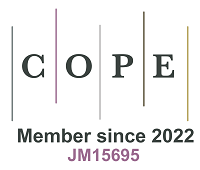REFERENCES
1. Panza F, Solfrizzi V, Logroscino G. Age-related hearing impairment-a risk factor and frailty marker for dementia and AD. Nat Rev Neurol. 2015;11:166-75.
2. Basu T, Sehar U, Malhotra K, et al. Healthy brain aging and delayed dementia in Texas rural elderly. Ageing Res Rev. 2023;91:102047.
3. Lombardi G, Crescioli G, Cavedo E, et al. Structural magnetic resonance imaging for the early diagnosis of dementia due to Alzheimer’s disease in people with mild cognitive impairment. Cochrane Database Syst Rev. 2020;3:CD009628.
4. He Z, Li M, Zou S, et al. Protection and prevention of age-related hearing loss. In: Li H, Chai R, editors. Hearing loss: mechanisms, prevention and cure. Singapore: Springer; 2019. pp. 59-71.
5. Maniaci A, La Via L, Lechien JR, et al. Hearing loss and oxidative stress: a comprehensive review. Antioxidants. 2024;13:842.
7. GBD 2019 Hearing Loss Collaborators. Hearing loss prevalence and years lived with disability, 1990-2019: findings from the Global Burden of Disease Study 2019. Lancet. 2021;397:996-1009.
10. Shaulson ED, Cohen AA, Picard M. The brain-body energy conservation model of aging. Nat Aging. 2024;4:1354-71.
12. Qi G, Mi Y, Yin F. Cellular specificity and inter-cellular coordination in the brain bioenergetic system: implications for aging and neurodegeneration. Front Physiol. 2019;10:1531.
13. Kang H, Choi SJ, Park KH, Lee CK, Moon JS. Impaired glycolysis promotes alcohol exposure-induced apoptosis in HEI-OC1 cells via inhibition of EGFR signaling. Int J Mol Sci. 2020;21:476.
14. Fujimoto C, Yamasoba T. Oxidative stresses and mitochondrial dysfunction in age-related hearing loss. Oxid Med Cell Longev. 2014;2014:582849.
15. Revuelta M, Santaolalla F, Arteaga O, Alvarez A, Sánchez-Del-Rey A, Hilario E. Recent advances in cochlear hair cell regeneration-A promising opportunity for the treatment of age-related hearing loss. Ageing Res Rev. 2017;36:149-55.
16. Fontana L, Nehme J, Demaria M. Caloric restriction and cellular senescence. Mech Ageing Dev. 2018;176:19-23.
17. Kim HJ, Cao W, Oh GS, et al. Augmentation of cellular NAD+ by NQO1 enzymatic action improves age-related hearing impairment. Aging Cell. 2019;18:e13016.
18. Zhang S, Zuo W, Guo XF, He WB, Chen NH. Cerebral glucose transporter: the possible therapeutic target for ischemic stroke. Neurochem Int. 2014;70:22-9.
19. Dienel GA. Brain glucose metabolism: integration of energetics with function. Physiol Rev. 2019;99:949-1045.
20. Camandola S, Mattson MP. Brain metabolism in health, aging, and neurodegeneration. EMBO J. 2017;36:1474-92.
21. Kleinridders A, Ferris HA, Cai W, Kahn CR. Insulin action in brain regulates systemic metabolism and brain function. Diabetes. 2014;63:2232-43.
22. Yan X, Hu Y, Wang B, Wang S, Zhang X. Metabolic dysregulation contributes to the progression of Alzheimer’s disease. Front Neurosci. 2020;14:530219.
24. Chandel NS. NADPH-the forgotten reducing equivalent. Cold Spring Harb Perspect Biol. 2021;13:a040550.
25. Stanton RC. Glucose-6-phosphate dehydrogenase, NADPH, and cell survival. IUBMB Life. 2012;64:362-9.
26. Ying W. NAD+/NADH and NADP+/NADPH in cellular functions and cell death: regulation and biological consequences. Antioxid Redox Signal. 2008;10:179-206.
27. White K, Kim MJ, Ding D, et al.
28. Someya S, Xu J, Kondo K, et al. Age-related hearing loss in C57BL/6J mice is mediated by Bak-dependent mitochondrial apoptosis. Proc Natl Acad Sci U S A. 2009;106:19432-7.
29. Bermúdez-Muñoz JM, Celaya AM, Hijazo-Pechero S, Wang J, Serrano M, Varela-Nieto I. G6PD overexpression protects from oxidative stress and age-related hearing loss. Aging Cell. 2020;19:e13275.
30. Nóbrega-Pereira S, Fernandez-Marcos PJ, Brioche T, et al. G6PD protects from oxidative damage and improves healthspan in mice. Nat Commun. 2016;7:10894.
31. Miwa T, Tarui A, Kouga T, et al.
32. Jamesdaniel S, Rathinam R, Neumann WL. Targeting nitrative stress for attenuating cisplatin-induced downregulation of cochlear LIM domain only 4 and ototoxicity. Redox Biol. 2016;10:257-65.
33. Tian C, Kim YJ, Hali S, et al. Suppressed expression of LDHB promotes age-related hearing loss via aerobic glycolysis. Cell Death Dis. 2020;11:375.
34. Di Liberto G, Kiger L, Marden MC, et al. Dense red blood cell and oxygen desaturation in sickle-cell disease. Am J Hematol. 2016;91:1008-13.
35. Kaminsky YG, Reddy VP, Ashraf GM, et al. Age-related defects in erythrocyte 2,3-diphosphoglycerate metabolism in dementia. Aging Dis. 2013;4:244-55.
36. Kosenko EA, Aliev G, Kaminsky YG. Relationship between chronic disturbance of 2,3-diphosphoglycerate metabolism in erythrocytes and Alzheimer disease. CNS Neurol Disord Drug Targets. 2016;15:113-23.
37. Kosenko EA, Tikhonova LA, Montoliu C, Barreto GE, Aliev G, Kaminsky YG. Metabolic abnormalities of erythrocytes as a risk factor for Alzheimer’s disease. Front Neurosci. 2017;11:728.
38. Qiang Q, Manalo JM, Sun H, et al. Erythrocyte adenosine A2B receptor prevents cognitive and auditory dysfunction by promoting hypoxic and metabolic reprogramming. PLoS Biol. 2021;19:e3001239.
39. Zhao YY, Takahashi M, Gu JG, et al. Functional roles of N-glycans in cell signaling and cell adhesion in cancer. Cancer Sci. 2008;99:1304-10.
40. Scott H, Panin VM. The role of protein N-glycosylation in neural transmission. Glycobiology. 2014;24:407-17.
41. Nonomura Y, Sawamura S, Hanzawa K, et al. Characterisation of N-glycans in the epithelial-like tissue of the rat cochlea. Sci Rep. 2019;9:1551.
42. Spinelli KJ, Klimek JE, Wilmarth PA, et al. Distinct energy metabolism of auditory and vestibular sensory epithelia revealed by quantitative mass spectrometry using MS2 intensity. Proc Natl Acad Sci U S A. 2012;109:E268-77.
43. Amelio I, Cutruzzolá F, Antonov A, Agostini M, Melino G. Serine and glycine metabolism in cancer. Trends Biochem Sci. 2014;39:191-8.
44. Nilsson R, Jain M, Madhusudhan N, et al. Metabolic enzyme expression highlights a key role for MTHFD2 and the mitochondrial folate pathway in cancer. Nat Commun. 2014;5:3128.
45. Bruno G, Runzo C, Cavallo-Perin P, et al; Piedmont Study Group for Diabetes Epidemiology. Incidence of type 1 and type 2 diabetes in adults aged 30-49 years: the population-based registry in the province of Turin, Italy. Diabetes Care. 2005;28:2613-9.
46. Holman N, Young B, Gadsby R. Current prevalence of type 1 and type 2 diabetes in adults and children in the UK. Diabet Med. 2015;32:1119-20.
47. Zheng Y, Ley SH, Hu FB. Global aetiology and epidemiology of type 2 diabetes mellitus and its complications. Nat Rev Endocrinol. 2018;14:88-98.
48. American Diabetes Association: clinical practice recommendations 1997. Diabetes Care. 1997;20 Suppl 1:S1-70.
49. Norton L, Shannon C, Gastaldelli A, DeFronzo RA. Insulin: the master regulator of glucose metabolism. Metabolism. 2022;129:155142.
50. Ren H, Wang Z, Mao Z, et al. Hearing loss in type 2 diabetes in association with diabetic neuropathy. Arch Med Res. 2017;48:631-7.
51. Gupta S, Eavey RD, Wang M, Curhan SG, Curhan GC. Type 2 diabetes and the risk of incident hearing loss. Diabetologia. 2019;62:281-5.
52. Cruickshanks KJ, Nondahl DM, Dalton DS, et al. Smoking, central adiposity, and poor glycemic control increase risk of hearing impairment. J Am Geriatr Soc. 2015;63:918-24.
53. Mozaffari M, Tajik A, Ariaei N, Ali-Ehyaii F, Behnam H. Diabetes mellitus and sensorineural hearing loss among non-elderly people. East Mediterr Health J. 2010;16:947-52.
54. Wackym PA, Linthicum FH Jr. Diabetes mellitus and hearing loss: clinical and histopathologic relationships. Am J Otol. 1986;7:176-82.
55. Makishima K, Tanaka K. Pathological changes of the inner ear and central auditory pathway in diabetics. Ann Otol Rhinol Laryngol. 1971;80:218-28.
56. Guerci B, Kearney-Schwartz A, Böhme P, Zannad F, Drouin P. Endothelial dysfunction and type 2 diabetes. Part 1: physiology and methods for exploring the endothelial function. Diabetes Metab. 2001;27:425-34.
57. Taslipinar A, Yaman H, Yilmaz MI, et al. The relationship between inflammation, endothelial dysfunction and proteinuria in patients with diabetic nephropathy. Scand J Clin Lab Invest. 2011;71:606-12.
58. Frisina ST, Mapes F, Kim S, Frisina DR, Frisina RD. Characterization of hearing loss in aged type II diabetics. Hear Res. 2006;211:103-13.
59. Nishizuka Y. Protein kinase C and lipid signaling for sustained cellular responses. FASEB J. 1995;9:484-96.
60. Shiba T, Inoguchi T, Sportsman JR, Heath WF, Bursell S, King GL. Correlation of diacylglycerol level and protein kinase C activity in rat retina to retinal circulation. Am J Physiol. 1993;265:E783-93.
61. Le Prell CG, Yamashita D, Minami SB, Yamasoba T, Miller JM. Mechanisms of noise-induced hearing loss indicate multiple methods of prevention. Hear Res. 2007;226:22-43.
62. Gries A, Herr A, Kirsch S, et al. Inhaled nitric oxide inhibits platelet-leukocyte interactions in patients with acute respiratory distress syndrome. Crit Care Med. 2003;31:1697-704.
64. Mantha AK, Sarkar B, Tell G. A short review on the implications of base excision repair pathway for neurons: relevance to neurodegenerative diseases. Mitochondrion. 2014;16:38-49.
65. Schieber M, Chandel NS. ROS function in redox signaling and oxidative stress. Curr Biol. 2014;24:R453-62.
66. Wang J, Puel JL. Presbycusis: an update on cochlear mechanisms and therapies. J Clin Med. 2020;9:218.
67. Wall SM, Knepper MA, Hassell KA, et al. Hypotension in NKCC1 null mice: role of the kidneys. Am J Physiol Renal Physiol. 2006;290:F409-16.
68. Weaver CD, Harden D, Dworetzky SI, Robertson B, Knox RJ. A thallium-sensitive, fluorescence-based assay for detecting and characterizing potassium channel modulators in mammalian cells. J Biomol Screen. 2004;9:671-7.
69. Ding B, Frisina RD, Zhu X, Sakai Y, Sokolowski B, Walton JP. Direct control of Na+-K+-2Cl--cotransport protein (NKCC1) expression with aldosterone. Am J Physiol Cell Physiol. 2014;306:C66-75.
70. Bainbridge KE, Cheng YJ, Cowie CC. Potential mediators of diabetes-related hearing impairment in the U.S. population: National Health and Nutrition Examination Survey 1999-2004. Diabetes Care. 2010;33:811-6.
71. Lee AY, Chung SS. Contributions of polyol pathway to oxidative stress in diabetic cataract. FASEB J. 1999;13:23-30.
72. Shi TF, Zhou Z, Jiang WJ, Huang TL, Si JQ, Li L. Hyperglycemia-induced oxidative stress exacerbates mitochondrial apoptosis damage to cochlear stria vascularis pericytes via the ROS-mediated Bcl-2/CytC/AIF pathway. Redox Rep. 2024;29:2382943.
73. Botelho CT, Carvalho SA, Silva IN. Increased prevalence of early cochlear damage in young patients with type 1 diabetes detected by distortion product otoacoustic emissions. Int J Audiol. 2014;53:402-8.
74. Alam MM, Sohoni S, Kalainayakan SP, Garrossian M, Zhang L. Cyclopamine tartrate, an inhibitor of Hedgehog signaling, strongly interferes with mitochondrial function and suppresses aerobic respiration in lung cancer cells. BMC Cancer. 2016;16:150.
75. Huang TJ, Sayers NM, Verkhratsky A, Fernyhough P. Neurotrophin-3 prevents mitochondrial dysfunction in sensory neurons of streptozotocin-diabetic rats. Exp Neurol. 2005;194:279-83.
76. Krabbe KS, Nielsen AR, Krogh-Madsen R, et al. Brain-derived neurotrophic factor (BDNF) and type 2 diabetes. Diabetologia. 2007;50:431-8.
78. Ryu OH, Choi MG, Park CH, Kim DK, Lee JS, Lee JH. Hyperglycemia as a potential prognostic factor of idiopathic sudden sensorineural hearing loss. Otolaryngol Head Neck Surg. 2014;150:853-8.
79. Ryu OH, Chao JR, Choi MG, et al. Insulin effect on hearing recovery in idiopathic sudden sensorineural hearing loss: retrospective study of 145 patients. Clin Otolaryngol. 2017;42:1072-7.
80. Park E, Shim J, Choi SJ, Jung HH, Im GJ. Effects of glycemic control on hearing outcomes in diabetes patients with idiopathic sudden sensorineural hearing loss. J Int Adv Otol. 2021;17:109-14.
81. Wu H, Niu H, Shao A, et al. Astaxanthin as a potential neuroprotective agent for neurological diseases. Mar Drugs. 2015;13:5750-66.
82. Kim E, Lee DW, Park HC, Kim DH. Protective effects of alpha-lipoic acid on hair cell damage in diabetic zebrafish model. Mol Genet Metab Rep. 2021;28:100783.
83. Bhatt IS, Raygoza Garay JA, Bhagavan SG, Ingalls V, Dias R, Torkamani A. Polygenic risk score-based association analysis identifies genetic comorbidities associated with age-related hearing difficulty in two independent samples. J Assoc Res Otolaryngol. 2024;25:387-406.
84. Ghisletta P, Dahle CL, Raz N. Age-related hearing loss, cognitive performance, and metabolic risk in healthy adults: a seven-year longitudinal study. J Gerontol B Psychol Sci Soc Sci. 2023;78:409-20.
85. Praveen K, Dobbyn L, Gurski L, et al; GHS-REGN DiscovEHR collaboration, Regeneron Genetics Center, Decibel-REGN collaboration. Population-scale analysis of common and rare genetic variation associated with hearing loss in adults. Commun Biol. 2022;5:540.
86. Ninoyu Y, Friedman RA. The genetic landscape of age-related hearing loss. Trends Genet. 2024;40:228-37.
87. Uchida Y, Sugiura S, Sone M, Ueda H, Nakashima T. Progress and prospects in human genetic research into age-related hearing impairment. Biomed Res Int. 2014;2014:390601.
88. Van Laer L, Van Eyken E, Fransen E, et al. The grainyhead like 2 gene (GRHL2), alias TFCP2L3, is associated with age-related hearing impairment. Hum Mol Genet. 2008;17:159-69.
90. Samocha-Bonet D, Wu B, Ryugo DK. Diabetes mellitus and hearing loss: a review. Ageing Res Rev. 2021;71:101423.
91. He Y, Wang Z, Zhang H, et al. Polygenic risk score modifies the association of HbA1c with hearing loss in middle-aged and older chinese individuals: the Dongfeng-Tongji cohort. Diabetes Care. 2024;47:1186-93.
92. Kim SJ, Reed N, Betz JF, et al. Association between microvascular retinal signs and age-related hearing loss in the atherosclerosis risk in communities neurocognitive study (ARIC-NCS). JAMA Otolaryngol Head Neck Surg. 2020;146:152-9.
93. Mogi M, Ikegawa Y, Haga S, Hoshide S, Kario K. Hypertension facilitates age-related diseases. ~Is hypertension associated with a wide variety of diseases?~. Hypertens Res. 2024;47:1246-59.
94. Kakarlapudi V, Sawyer R, Staecker H. The effect of diabetes on sensorineural hearing loss. Otol Neurotol. 2003;24:382-6.
95. Livingston G, Huntley J, Sommerlad A, et al. Dementia prevention, intervention, and care: 2020 report of the Lancet Commission. Lancet. 2020;396:413-46.
96. Tarawneh HY, Jayakody DMP, Sohrabi HR, Martins RN, Mulders WHAM. Understanding the relationship between age-related hearing loss and Alzheimer’s disease: a narrative review. J Alzheimers Dis Rep. 2022;6:539-56.
97. Klionsky DJ, Abdelmohsen K, Abe A, et al. Guidelines for the use and interpretation of assays for monitoring autophagy (3rd edition). Autophagy. 2016;12:1-222.
98. Stahl SM. Does treating hearing loss prevent or slow the progress of dementia? Hearing is not all in the ears, but who’s listening?. CNS Spectr. 2017;22:247-50.
99. Wayne RV, Johnsrude IS. A review of causal mechanisms underlying the link between age-related hearing loss and cognitive decline. Ageing Res Rev. 2015;23:154-66.
100. Lin FR, Albert M. Hearing loss and dementia - who is listening?. Aging Ment Health. 2014;18:671-3.
101. Eichenbaum H, Yonelinas AP, Ranganath C. The medial temporal lobe and recognition memory. Annu Rev Neurosci. 2007;30:123-52.
102. Raslau FD, Mark IT, Klein AP, Ulmer JL, Mathews V, Mark LP. Memory part 2: the role of the medial temporal lobe. AJNR Am J Neuroradiol. 2015;36:846-9.
103. Newcombe EA, Camats-Perna J, Silva ML, Valmas N, Huat TJ, Medeiros R. Inflammation: the link between comorbidities, genetics, and Alzheimer’s disease. J Neuroinflammation. 2018;15:276.
104. Riva C, Donadieu E, Magnan J, Lavieille JP. Age-related hearing loss in CD/1 mice is associated to ROS formation and HIF target proteins up-regulation in the cochlea. Exp Gerontol. 2007;42:327-36.
105. Yamasoba T, Lin FR, Someya S, Kashio A, Sakamoto T, Kondo K. Current concepts in age-related hearing loss: epidemiology and mechanistic pathways. Hear Res. 2013;303:30-8.
106. Calsolaro V, Edison P. Neuroinflammation in Alzheimer’s disease: current evidence and future directions. Alzheimers Dement. 2016;12:719-32.
107. Nash SD, Cruickshanks KJ, Zhan W, et al. Long-term assessment of systemic inflammation and the cumulative incidence of age-related hearing impairment in the epidemiology of hearing loss study. J Gerontol A Biol Sci Med Sci. 2014;69:207-14.
108. Shen Y, Ye B, Chen P, et al. Cognitive decline, dementia, Alzheimer’s disease and presbycusis: examination of the possible molecular mechanism. Front Neurosci. 2018;12:394.
109. Lagouge M, Argmann C, Gerhart-Hines Z, et al. Resveratrol improves mitochondrial function and protects against metabolic disease by activating SIRT1 and PGC-1alpha. Cell. 2006;127:1109-22.
110. Cheng A, Wan R, Yang JL, et al. Involvement of PGC-1α in the formation and maintenance of neuronal dendritic spines. Nat Commun. 2012;3:1250.
111. Xue T, Wei L, Zha DJ, et al. miR-29b overexpression induces cochlear hair cell apoptosis through the regulation of SIRT1/PGC-1α signaling: implications for age-related hearing loss. Int J Mol Med. 2016;38:1387-94.
112. Chan D, Anderson V, Pijnenburg Y, et al. The clinical profile of right temporal lobe atrophy. Brain. 2009;132:1287-98.
113. Hardie DG. AMPK: a key regulator of energy balance in the single cell and the whole organism. Int J Obes. 2008;32 Suppl 4:S7-12.
114. Pichora-Fuller MK. Cognitive aging and auditory information processing. Int J Audiol. 2003;42 Suppl 2:2s26-32.
115. Zekveld AA, Deijen JB, Goverts ST, Kramer SE. The relationship between nonverbal cognitive functions and hearing loss. J Speech Lang Hear Res. 2007;50:74-82.
116. Akeroyd MA. Are individual differences in speech reception related to individual differences in cognitive ability? A survey of twenty experimental studies with normal and hearing-impaired adults. Int J Audiol. 2008;47 Suppl 2:S53-71.
117. Pan L, Li C, Meng L, et al. GDF1 ameliorates cognitive impairment induced by hearing loss. Nat Aging. 2024;4:568-83.
118. Park JH, Sahbaz BD, Pekhale K, et al. Early-onset hearing loss in mouse models of Alzheimer’s disease and increased DNA damage in the cochlea. Aging Biol. 2024;1:20240025.
119. Uchida Y, Sugiura S, Nishita Y, Saji N, Sone M, Ueda H. Age-related hearing loss and cognitive decline - the potential mechanisms linking the two. Auris Nasus Larynx. 2019;46:1-9.
120. Dupuis K, Pichora-Fuller MK, Chasteen AL, Marchuk V, Singh G, Smith SL. Effects of hearing and vision impairments on the Montreal Cognitive Assessment. Neuropsychol Dev Cogn B Aging Neuropsychol Cogn. 2015;22:413-37.
121. Jorgensen LE, Palmer CV, Pratt S, Erickson KI, Moncrieff D. The effect of decreased audibility on MMSE performance: a measure commonly used for diagnosing dementia. J Am Acad Audiol. 2016;27:311-23.
122. Hill-Briggs F, Dial JG, Morere DA, Joyce A. Neuropsychological assessment of persons with physical disability, visual impairment or blindness, and hearing impairment or deafness. Arch Clin Neuropsychol. 2007;22:389-404.
123. Siedlecki-Wullich D, Miñano-Molina AJ, Rodríguez-Álvarez J. microRNAs as Early biomarkers of Alzheimer’s disease: a synaptic perspective. Cells. 2021;10:113.
124. Lin FR, Ferrucci L, An Y, et al. Association of hearing impairment with brain volume changes in older adults. Neuroimage. 2014;90:84-92.
125. Lindenberger U, Baltes PB. Sensory functioning and intelligence in old age: a strong connection. Psychol Aging. 1994;9:339-55.
126. Humes LE, Busey TA, Craig J, Kewley-Port D. Are age-related changes in cognitive function driven by age-related changes in sensory processing?. Atten Percept Psychophys. 2013;75:508-24.
127. Slade K, Plack CJ, Nuttall HE. The effects of age-related hearing loss on the brain and cognitive function. Trends Neurosci. 2020;43:810-21.
128. Braak H, Braak E. Neuropathological stageing of Alzheimer-related changes. Acta Neuropathol. 1991;82:239-59.
129. Hyman BT, Van Hoesen GW, Damasio AR, Barnes CL. Alzheimer’s disease: cell-specific pathology isolates the hippocampal formation. Science. 1984;225:1168-70.
130. Pooler AM, Polydoro M, Wegmann S, Nicholls SB, Spires-Jones TL, Hyman BT. Propagation of tau pathology in Alzheimer’s disease: identification of novel therapeutic targets. Alzheimers Res Ther. 2013;5:49.
131. Zheng M, Yan J, Hao W, et al. Worsening hearing was associated with higher β-amyloid and tau burden in age-related hearing loss. Sci Rep. 2022;12:10493.
133. Tomlin D, Rance G, Graydon K, Tsialios I. A comparison of 40 Hz auditory steady-state response (ASSR) and cortical auditory evoked potential (CAEP) thresholds in awake adult subjects. Int J Audiol. 2006;45:580-8.
134. Takeda T, Kakigi A. The clinical value of extratympanic electrocochleography in the diagnosis of Ménière’s disease. ORL J Otorhinolaryngol Relat Spec. 2010;72:196-204.
135. Wronka E, Kaiser J, Coenen AML. Neural generators of the auditory evoked potential components P3a and P3b. Acta Neurobiol Exp. 2012;72:51-64.
136. Tarawneh HY, Mulders WHAM, Sohrabi HR, Martins RN, Jayakody DMP. Investigating auditory electrophysiological measures of participants with mild cognitive impairment and Alzheimer’s disease: a systematic review and meta-analysis of event-related potential studies. J Alzheimers Dis. 2021;84:419-48.
137. Wei G, Tian X, Yang H, et al. Adjunct methods for Alzheimer’s disease detection: a review of auditory evoked potentials. J Alzheimers Dis. 2024;97:1503-17.
138. Tolosa E, Wenning G, Poewe W. The diagnosis of Parkinson’s disease. Lancet Neurol. 2006;5:75-86.
139. Vitale C, Marcelli V, Allocca R, et al. Hearing impairment in Parkinson’s disease: expanding the nonmotor phenotype. Mov Disord. 2012;27:1530-5.
140. Cha CH, Lin TK, Wu CN, Yang CH, Huang YW, Hwang CF. Relationship of hearing loss to Parkinson’s disease, dementia, and APOE genotype in adults. Medicina. 2024;60:703.
141. Wu J, Hasselgren C, Zettergren A, et al. The impact of social networks and APOE ε4 on dementia among older adults: tests of possible interactions. Aging Ment Health. 2020;24:395-404.
142. Lendvai B, Halmos GB, Polony G, et al. Chemical neuroprotection in the cochlea: the modulation of dopamine release from lateral olivocochlear efferents. Neurochem Int. 2011;59:150-8.
143. Maison SF, Liu XP, Eatock RA, Sibley DR, Grandy DK, Liberman MC. Dopaminergic signaling in the cochlea: receptor expression patterns and deletion phenotypes. J Neurosci. 2012;32:344-55.
144. Sisto R, Viziano A, Stefani A, et al. Lateralization of cochlear dysfunction as a specific biomarker of Parkinson’s disease. Brain Commun. 2020;2:fcaa144.
145. Cerroni R, Pierantozzi M, Moleti A, et al. Laterality of auditory dysfunction in Parkinson’s disease. Mov Disord. 2020;35:1283-4.
146. Dickson DW, Braak H, Duda JE, et al. Neuropathological assessment of Parkinson’s disease: refining the diagnostic criteria. Lancet Neurol. 2009;8:1150-7.
147. Garasto E, Stefani A, Pierantozzi M, et al. Association between hearing sensitivity and dopamine transporter availability in Parkinson’s disease. Brain Commun. 2023;5:fcad075.
149. Akil O, Weber CM, Park SN, Ninkina N, Buchman V, Lustig LR. Localization of synucleins in the mammalian cochlea. J Assoc Res Otolaryngol. 2008;9:452-63.
150. Chandra S, Fornai F, Kwon HB, et al. Double-knockout mice for alpha- and beta-synucleins: effect on synaptic functions. Proc Natl Acad Sci U S A. 2004;101:14966-71.
151. Ruel J, Nouvian R, Gervais d’Aldin C, Pujol R, Eybalin M, Puel JL. Dopamine inhibition of auditory nerve activity in the adult mammalian cochlea. Eur J Neurosci. 2001;14:977-86.
152. Pujol R. Lateral and medial efferents: a double neurochemical mechanism to protect and regulate inner and outer hair cell function in the cochlea. Br J Audiol. 1994;28:185-91.
153. Niu X, Canlon B. The signal transduction pathway for the dopamine D1 receptor in the guinea-pig cochlea. Neuroscience. 2006;137:981-90.
154. Shalash AS, Hassan DM, Elrassas HH, et al. Auditory- and vestibular-evoked potentials correlate with motor and non-motor features of Parkinson’s disease. Front Neurol. 2017;8:55.
155. Pötter-Nerger M, Reich MM, Colebatch JG, Deuschl G, Volkmann J. Differential effect of dopa and subthalamic stimulation on vestibular activity in Parkinson’s disease. Mov Disord. 2012;27:1268-75.
156. Halberstadt AL, Balaban CD. Selective anterograde tracing of the individual serotonergic and nonserotonergic components of the dorsal raphe nucleus projection to the vestibular nuclei. Neuroscience. 2007;147:207-23.
157. Jellinger KA. Neuropathology of sporadic Parkinson’s disease: evaluation and changes of concepts. Mov Disord. 2012;27:8-30.
158. Seidel K, Mahlke J, Siswanto S, et al. The brainstem pathologies of Parkinson’s disease and dementia with Lewy bodies. Brain Pathol. 2015;25:121-35.
159. Lu M, Su C, Qiao C, Bian Y, Ding J, Hu G. Metformin prevents dopaminergic neuron death in MPTP/P-induced mouse model of Parkinson’s disease via autophagy and mitochondrial ROS clearance. Int J Neuropsychopharmacol. 2016;19:pyw047.
160. Baduini IR, Castro Vildosola JE, Kavehmoghaddam S, et al. Type 2 diabetes mellitus and neurodegenerative disorders: the mitochondrial connection. Pharmacol Res. 2024;209:107439.
161. Small GW, Ercoli LM, Silverman DH, et al. Cerebral metabolic and cognitive decline in persons at genetic risk for Alzheimer’s disease. Proc Natl Acad Sci U S A. 2000;97:6037-42.
162. Mosconi L, De Santi S, Li J, et al. Hippocampal hypometabolism predicts cognitive decline from normal aging. Neurobiol Aging. 2008;29:676-92.
164. Winkler EA, Nishida Y, Sagare AP, et al. GLUT1 reductions exacerbate Alzheimer’s disease vasculo-neuronal dysfunction and degeneration. Nat Neurosci. 2015;18:521-30.
165. Cai R, Zhang Y, Simmering JE, et al. Enhancing glycolysis attenuates Parkinson’s disease progression in models and clinical databases. J Clin Invest. 2019;129:4539-49.
166. Zhang Y, Reichel JM, Han C, Zuniga-Hertz JP, Cai D. Astrocytic process plasticity and IKKβ/NF-κB in central control of blood glucose, blood pressure, and body weight. Cell Metab. 2017;25:1091-102.e4.
167. García-Cáceres C, Quarta C, Varela L, et al. Astrocytic insulin signaling couples brain glucose uptake with nutrient availability. Cell. 2016;166:867-80.
168. An Y, Varma VR, Varma S, et al. Evidence for brain glucose dysregulation in Alzheimer’s disease. Alzheimers Dement. 2018;14:318-29.







